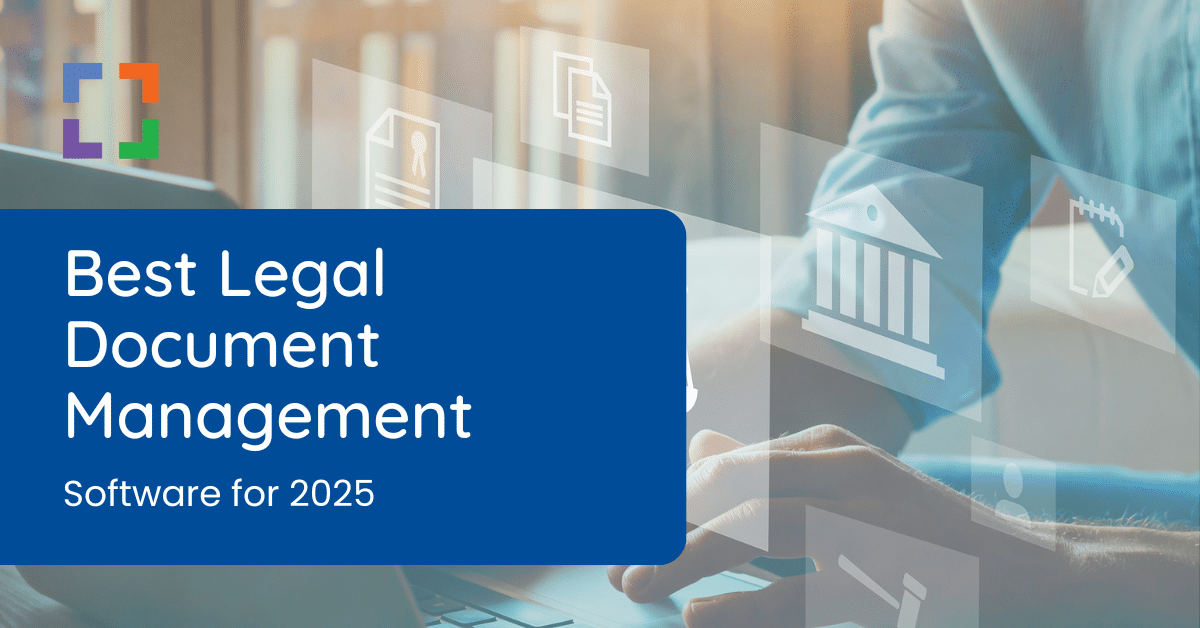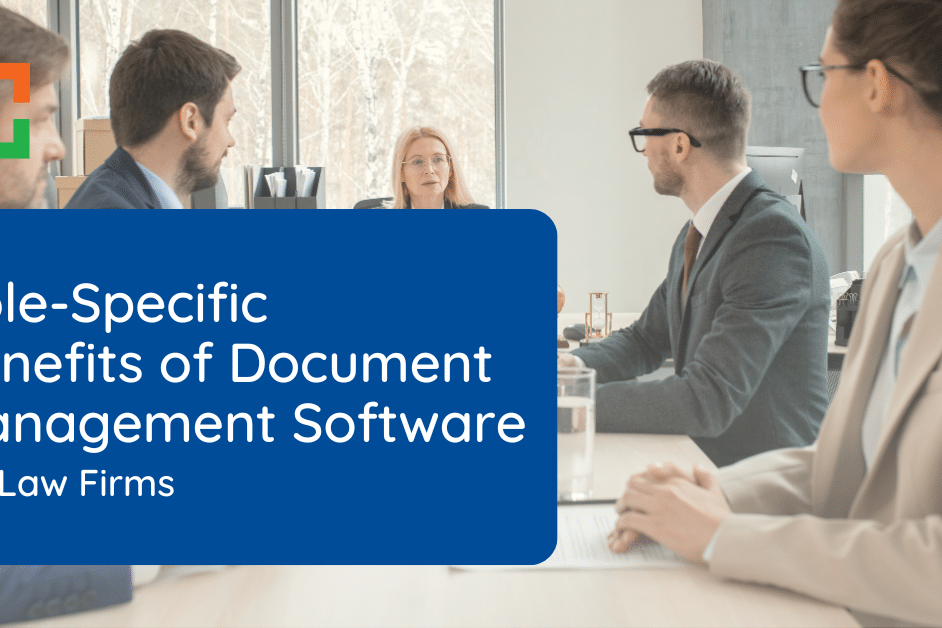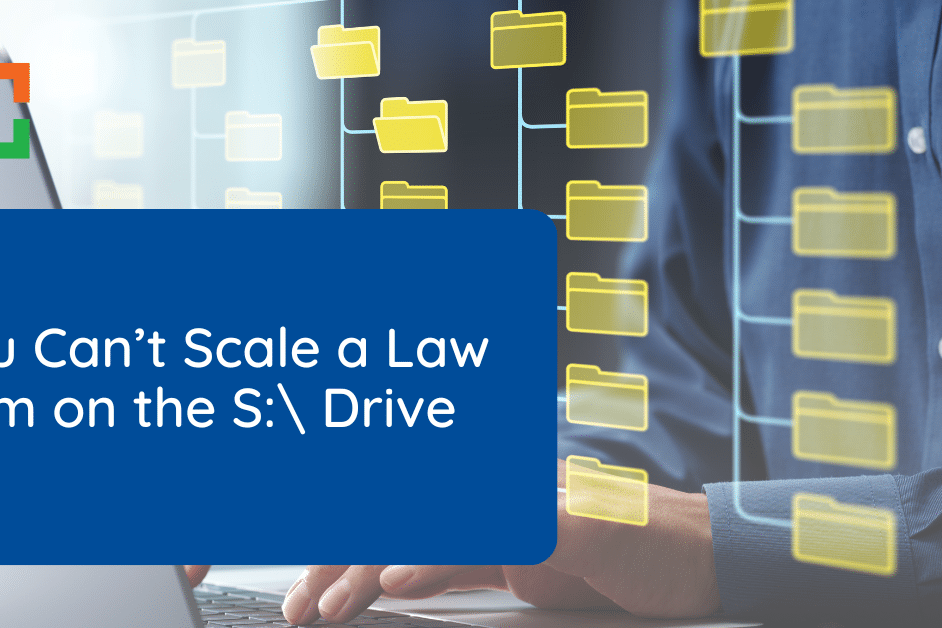Cost Analysis and ROI of Legal Document Management Software
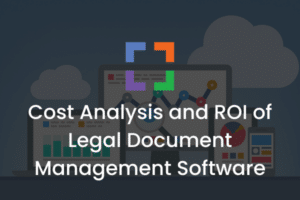 Law firms face the challenge of managing sensitive documents efficiently and securely. The right legal document management software (DMS) can transform this challenge into an opportunity to streamline operations and safeguard client information better than your competitors.
Law firms face the challenge of managing sensitive documents efficiently and securely. The right legal document management software (DMS) can transform this challenge into an opportunity to streamline operations and safeguard client information better than your competitors.
But with any technological investment comes the question of return on investment (ROI): is the initial and ongoing cost worth the benefits?
In this article, you will learn:
- Breaking down the costs of setting up a DMS.
- The ways a DMS can save money and make work more efficient.
- How to figure out and improve the return on investment (ROI) from a DMS.
By carefully looking at the expenses, savings, and benefits, law firms can make smart choices that help them work smarter and boost their profits.
Let’s get into the details of the financial and strategic benefits of using document management software in the legal world.
A legal DMS is a net-positive for most law firms. Let’s dive into the costs associated and ROI you can expect.
In This Article
- Breaking Down the Costs of Document Management Software
- Understanding How a Document Management System Saves Money for Law Firms
- The ROI of Legal Document Management Software for Law Firms
- Factors Influencing the ROI from DMS
- Maximizing ROI from Document Management Software: Key Strategies
- Frequently Asked Questions
Breaking Down the Costs of Document Management Software
Investing in legal document management software (DMS) is a significant decision for any law firm, requiring a clear understanding of the initial, implementation, and ongoing costs involved. These expenses are critical to consider when calculating the return on investment (ROI) and determining the value that DMS can bring to your firm.
Here, we break down these costs to provide a clearer picture of what law firms can expect when making this pivotal investment.
Initial Costs of Legal DMS
The upfront cost of acquiring legal DMS varies widely depending on the software provider, the features included, and the licensing model.
Some common examples include:
- LexWorkplace: $4,000 to $12,000
- Worldox: $4,000 to $20,000
- NetDocuments: $2,500 to $20,000
These figures illustrate the range of investment required just to purchase or subscribe to the software.
The choice between a one-time purchase license and a subscription model can significantly affect the initial cost. Subscriptions usually have a lower upfront cost but could cost more over time.
Related – Best Legal Document Management Software: A comparison of all of the top legal document management software.
Implementation Costs of Legal DMS
Beyond purchasing the software, law firms must also budget for the costs associated with deploying the system.
This includes:
- Installation and setup fees.
- Migration of existing documents into the new system.
- Integration with other legal and office software.
- Initial training for staff so they can effectively use the new system.
These activities are crucial for a smooth transition to the new DMS but can add significantly to the total cost of implementation.
Ongoing Costs of Legal DMS
After the system is up and running, law firms will incur ongoing expenses, including:
- Regular payments for subscriptions or license renewals.
- Fees for more user licenses as the firm grows.
- Costs for updates to the software and for support services.
- Training for new features and for new employees.
Let’s look at LexWorkplace. The initial cost of $395 a month includes 3 Users, plus $45 per additional user per month.
This is quite low when we examine other legal DMS providers like NetDocuments, but it does highlight the importance of calculating the long-term financial commitment involved in maintaining the DMS you purchase.
Understanding these costs is the first step in evaluating the ROI of a legal document management system. With a clear picture of the financial investment required, law firms can better assess the potential benefits and savings that a DMS can offer.
Understanding How a Document Management System (DMS) Saves Money for Law Firms
While the initial and ongoing costs of implementing a Document Management System (DMS) in a law firm might seem high, the cost-saving aspects and efficiency gains significantly outweigh these expenses in most cases.
A DMS not only streamlines the document handling process but also introduces substantial savings in several areas.
Let’s explore how DMS can be a cost-effective solution for modern law practices.
Reduced Physical Storage Needs
One big advantage of using a DMS is that it requires less physical space to store documents.
Old-school filing cabinets and storage rooms take up valuable office space, which can be costly, especially in big cities. Law firms that switch to digital document storage can use that space better or even move to a smaller office, saving money on rent and other related expenses.
Lower IT Costs
Document management systems that are stored on on-premise servers require a lot of upkeep.
Law firms rely on being able to get to, make, and work together on legal documents without trouble. When something goes wrong with their servers, they call in IT professionals.
Maintaining physical, on-premise servers comes with a host of problems that can end up costing a lot of money, which is especially tough for smaller law firms. Plus, dealing with IT issues can take away from time that could be spent on growing the business and helping clients.
Just consider the upfront costs of on-premise servers.
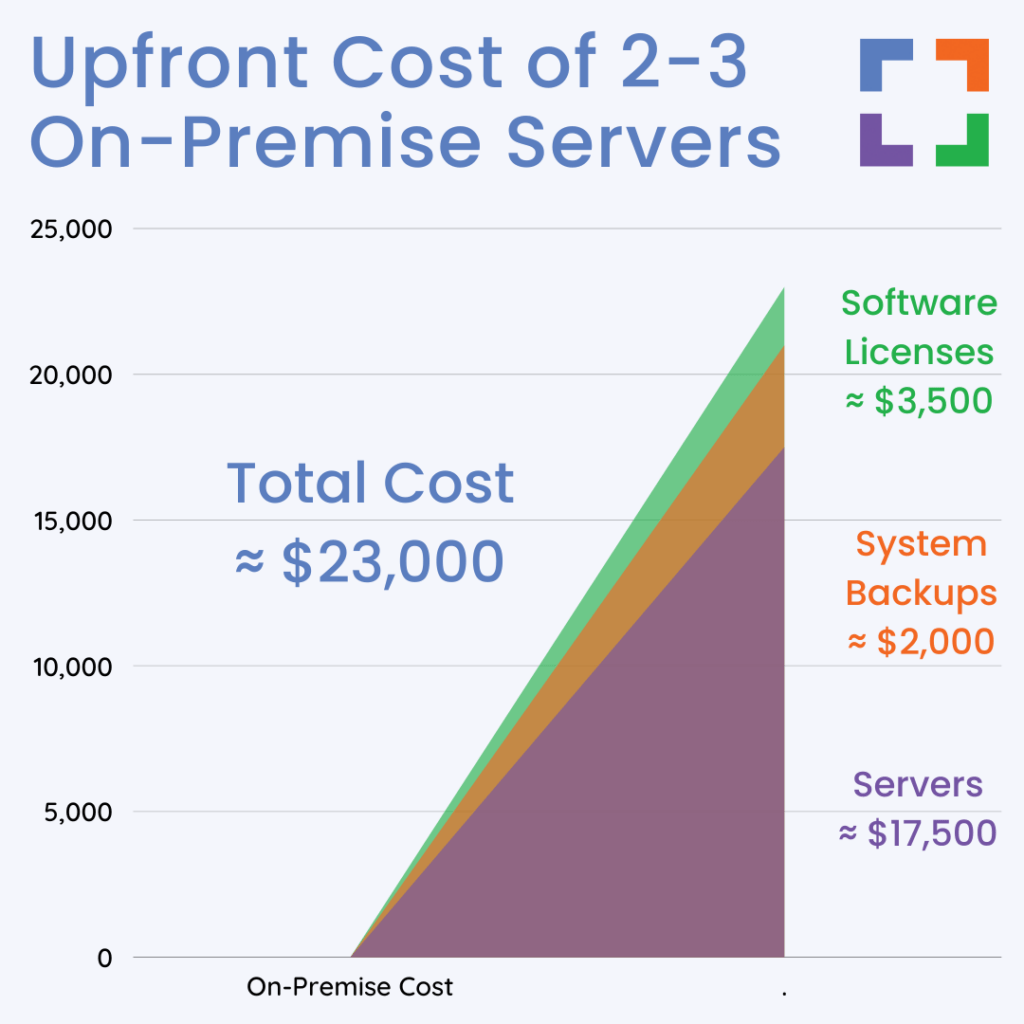
With document management software based in the cloud, you don't have to worry about maintaining servers. That isn't even considering the staggering rate at which these servers can fail over time.
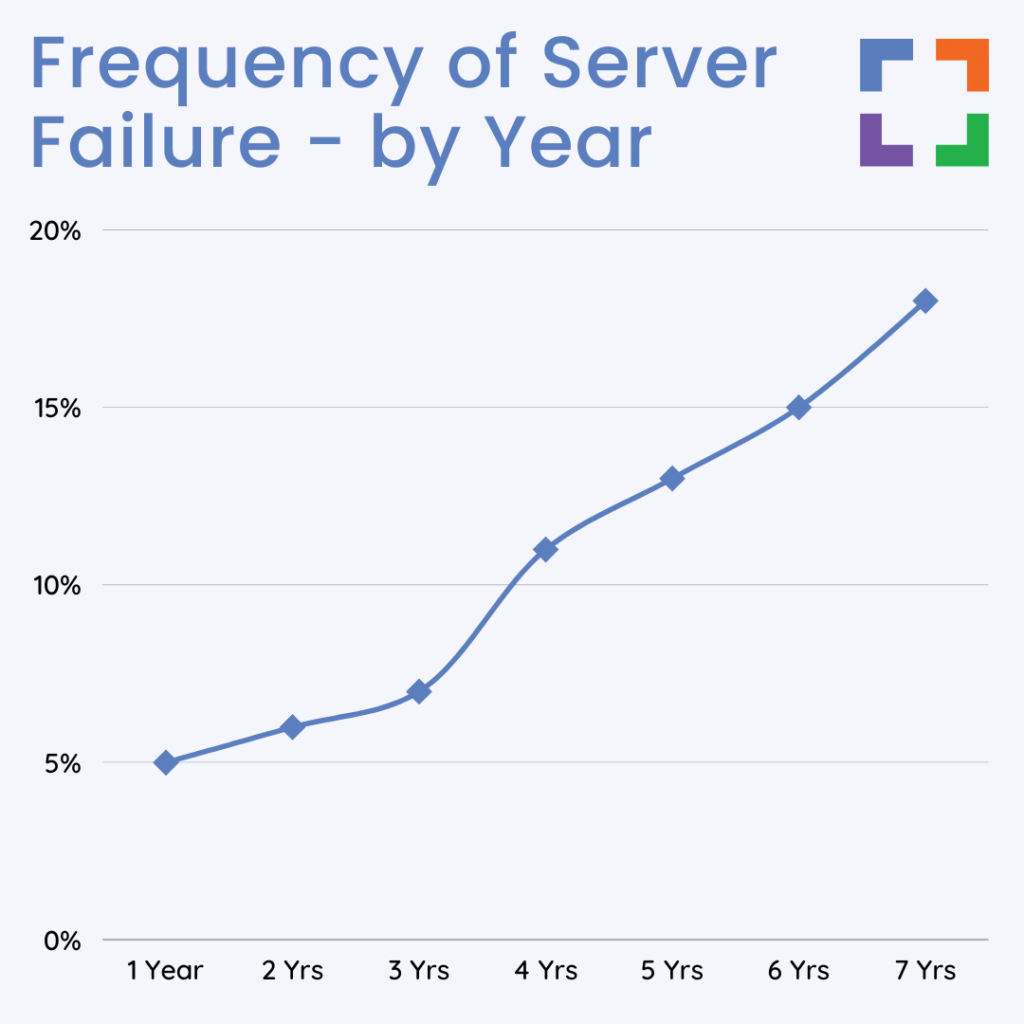
The ongoing problems and expenses are enough of a reason to think about using cloud-based servers. And don't forget about the initial costs of setting up a few servers on-site. Remember, servers have ongoing costs, and the bigger your firm gets, the more servers and expenses you'll have to deal with.
Improved Efficiency
A DMS makes finding, sharing, and working on documents a lot faster, changing how law firms work.
It only takes a few seconds to find documents in a digital system, unlike hours that might be spent searching through paper files. This makes lawyers and staff more productive, letting them spend more time on work that brings in money and less on admin tasks.
Also, being able to share and work on documents together online can help finish cases quicker, which means the firm might handle more clients and make more money.
Enhanced Security
Investing in DMS also offers cost savings through improved data security.
Law firms deal with very private information that needs to be secure. Data leaks can cause big financial penalties and make clients lose trust.
Many DMS providers offer top-notch security features, like encryption and controls on who can see the data, reducing the risk of these problems. The cost of these security steps is usually much lower than the expenses from a data leak, including legal fees, fines, and harm to the firm's good name.
By cutting down on physical storage, making work more efficient, and keeping data safer, a DMS proves to be a good way to save money.
These savings, together with the chance to earn more through handling cases better and taking on more work, show how valuable legal document management software can be for law firms.
Related – Law Firm Software: The ultimate guide to law firm software.
The ROI of Legal Document Management Software for Law Firms
When law firms consider adopting any new technology, including a Document Management System (DMS), they must consider whether the investment is worth it.
In simpler terms, they want to know if the money they spend will lead to significant savings or benefits down the line. Calculating the (ROI) is crucial for any business looking to make informed decisions and not regret their product purchases down the line.
Here’s how to break down this calculation into more straightforward steps.
How to Measure the Benefits
To truly understand the value of a Document Management System, law firms need to convert the various advantages it offers into measurable financial terms. This involves looking at the direct and indirect benefits of implementing a DMS and assigning a dollar value to each.
Calculating Time Saved
- Quick Document Access: One of the most straightforward benefits of DMS is how fast staff and lawyers can find what they need. To quantify, think about the hourly rates for your team and how many hours DMS saves them each week or month. Those saved hours could mean more time for client work or less need for overtime, both of which affect the bottom line.
- Better Collaboration: DMS also makes it easier to work together on documents without the back-and-forth of emails or paper copies. Estimate the time this saves and multiply it by the team's average hourly rate to see how much you're saving or earning back.
Cutting Down on Physical and Paper Costs
- Less Need for Physical Storage: Switching to digital documents means less money spent on file cabinets or storage space. Look at what you're currently spending on these and compare it to the costs after implementing DMS to find your savings.
- Saving on Paper: Consider the reduction in expenses for paper, printing, and copying before and after DMS implementation. These savings add up over time and contribute to the system's ROI.
Enhanced Security and Compliance
- Preventing Breaches: The advanced security of DMS helps avoid breaches, saving potential fines and protecting your reputation. While hard to put a precise figure on, considering the average costs of breaches in your sector can give you a ballpark of the savings.
- Simplifying Compliance: DMS can make meeting legal requirements easier and cheaper by organizing documents more efficiently. Think about the costs associated with compliance efforts before DMS and how they might decrease afterwards.
Assigning a dollar value to these areas of savings and increased revenue gives a clear picture of DMS’s financial benefits. This calculation not only supports the decision to invest in DMS but also demonstrates its potential to improve profitability through efficiencies and cost reductions.
Calculating ROI - The Formula
A straightforward formula to understand ROI is:

Where:
- Total Benefits: This is how much money the firm saves or earns extra, thanks to DMS, over a certain period.
- Total Costs: This includes all the money spent on getting, setting up, and keeping the DMS running over the same period.
Expanding the ROI Calculation to Include Intangible Benefits
While you can attempt to calculate the dollar-value ROI, there are many intangible benefits that contribute to the long-term value of a DMS. Things you can’t put into dollars.
These benefits, such as improved client satisfaction and enhanced security, may not directly translate into immediate financial returns but play a significant role in the firm’s overall success and growth.
These intangible benefits, though harder to quantify, can lead to substantial long-term advantages:
- Improved Client Satisfaction: Improved document accessibility and security can significantly boost client trust and satisfaction. Happy clients are more likely to return and refer others. While hard to quantify, increased client retention rates and referrals can indicate this benefit.
- Enhanced Security and Compliance: The advanced security features of a DMS reduce the risk of data breaches and ensure compliance with legal standards. The financial impact of avoiding potential fines and reputational damage is significant but not easily captured in an annual ROI calculation. Instead, consider the cost savings as risk mitigation that protects against potential future losses.
- Fostering a Culture of Efficiency: Implementing a DMS can lead to a more organized and efficient workplace culture. This cultural shift can improve employee morale and productivity, attracting and retaining top talent. Though these benefits don't directly translate into immediate financial gains, they contribute to the firm's long-term stability and growth.
To incorporate these intangible benefits into the ROI analysis, look at both direct and indirect impacts of the DMS:
- Qualitative Assessments: Gather feedback from clients and staff about their experiences before and after DMS implementation. Use surveys or interviews to assess improvements in satisfaction and productivity.
- Risk Mitigation Valuation: Estimate the financial impact of risks mitigated by the DMS, such as the cost of potential data breaches or non-compliance fines avoided.
- Long-Term Growth Metrics: Monitor indicators of long-term growth, such as client retention rates, referral numbers, and employee turnover rates, to gauge the indirect benefits of the DMS.
Legal DMS — What Other Firms Say

“LexWorkplace is very fast, and documents are easily accessible. Working remotely is seamless.”
Nathan Cobb
Law Offices of Nathan Cobb
LexWorkplace Success Story
See how one law firm uses LexWorkplace to organize their documents and streamline their practice.
Factors Influencing the ROI from DMS
The ROI from a DMS can differ widely from one law firm to another.
Several key factors play a role in determining just how beneficial a DMS can be. Understanding these factors can help law firms tailor their approach to implementing a DMS and maximize their ROI.
Firm Size and Document Volume
- Large vs. Small Firms: Bigger law firms deal with thousands of documents and may see quicker and more significant ROI from DMS due to the high volume of data managed. Small to medium-sized firms will also benefit greatly, especially in terms of efficiency and client service, but the scale of cost savings will differ.
- Document Handling Needs: Firms that handle a large volume of documents, regardless of their overall size, tend to benefit more from DMS. The more documents you need to manage, the greater the potential savings in time and storage costs.
Adoption and Utilization of DMS
- Employee Buy-in: The success of a DMS largely depends on whether staff and attorneys use it consistently and correctly. Training and change management are crucial for ensuring high adoption rates.
- Utilizing Full Features: Many DMS offers a range of features, from basic document storage to advanced search, collaboration tools, and security measures. Firms that leverage these features fully will see a higher ROI than those using the DMS merely as a digital filing cabinet.
Customization and Integration
- Tailoring to Firm’s Needs: The ability to customize the DMS to fit the specific workflows and needs of a law firm can significantly impact its effectiveness. Customization can range from simple changes in document tagging and organization to complex integrations with other software the firm uses.
- Integration with Existing Systems: A DMS that seamlessly integrates with a firm’s existing email, billing, or case management systems can increase efficiency by reducing the need to switch between applications. This integration can lead to substantial time savings and reduce the risk of errors, contributing positively to the ROI.
By considering these factors, law firms can make more informed decisions about selecting and implementing a DMS that fits their unique needs and maximizes their investment return.
Maximizing ROI from Document Management Software: Key Strategies
Maximizing the ROI from a DMS requires more than just selecting the best software.
It involves strategic implementation, adoption, and usage.
Let’s explore how you can get the most out of the DMS you choose.
Effective Implementation and Training
The foundation for a successful DMS implementation is a well-structured rollout plan tailored to the firm’s specific needs.
This plan should detail the timeline, designate team members responsible for each phase, and set clear objectives.
Comprehensive training sessions are crucial. Firms can significantly boost adoption rates and the system’s effectiveness by ensuring that all users, from lawyers to support staff, are proficient in using the DMS.
Regular Review and Optimization
A commitment to regular review and optimization is crucial for law firms to truly maximize their investment in a document management system. This starts with continuously monitoring how the DMS is used across the firm.
By gathering user feedback regularly, firms can gain valuable insights into how the system is performing, what’s working well, and where gaps or challenges may occur.
Understanding the user experience in detail helps identify areas that may require additional training and pinpoints aspects of the DMS that might need adjustments to suit the firm’s workflows better.
From there, you should take the insights gathered from users and translate them into actionable changes.
Using a Legal Document Management System to Level Up Your Firm
A legal DMS is a significant investment in technology that promises to streamline operations, enhance efficiency, and secure sensitive information. To truly realize the return on investment (ROI) of this technology, law firms must approach the implementation, adoption, and optimization of DMS strategically.
As law firms look to the future, the focus should be on how technology like DMS can not only support current operations but also pave the way for new opportunities and growth.
Frequently Asked Questions
The timeframe to see a tangible ROI from a DMS can vary based on factors like the law firm’s size, the complexity of the implementation, and the speed at which staff adopt and adapt to the system.
Typically, firms might begin to notice efficiency gains and cost savings within the first 6 to 12 months post-implementation, while the realization of intangible benefits and their impact on ROI could take longer.
Although the ROI of a DMS is generally positive, there are scenarios where the investment may not yield the expected financial return.
Reasons can include poor implementation, low adoption rates, selecting a system that doesn’t fit the firm’s needs well, or insufficient training. Addressing these factors early can help mitigate the risk of a negative ROI.
To maximize ROI, law firms should conduct a comprehensive needs analysis, considering document volume, security requirements, and existing system integration.
Demonstrations and trials, feedback from other firms, and evaluations of scalability and support from the DMS provider are crucial. Involving end-users in the selection process can also ensure the chosen system meets the firm’s needs and encourages adoption.
Looking for Document Management Software?
LexWorkplace:
Modern Document Management for Law Firms
LexWorkplace is document & email management software, born in the cloud and built for law firms. Here’s a quick primer on how it works, or get your free trial to discover LexWorkplace for yourself.
Organize by Client & Matter
Organize documents, email and notes by client or matter. Store and manage all data for a case or project in one place.
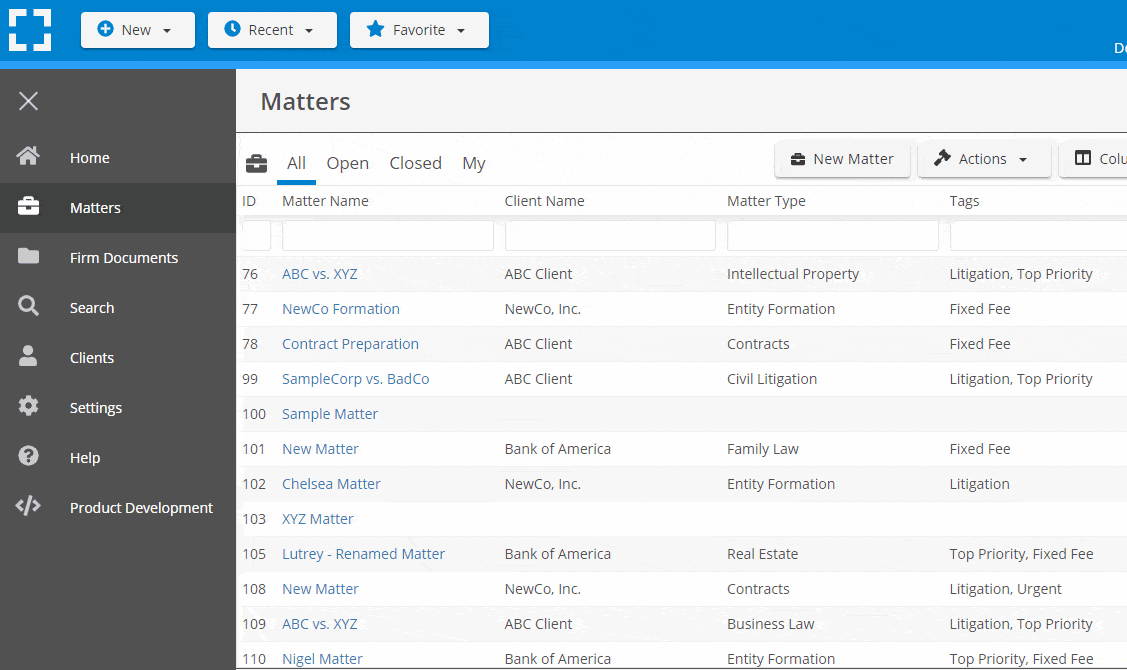
Go Beyond Basic Files & Folders
Supercharge your firm’s productivity with true DMS functions.
- Version Management
- Document Tagging & Profiling
- Document Check-Out / Check-In
- Microsoft Office Integration
- Automatic, Integrated OCR
- Convert Word Docs to PDF
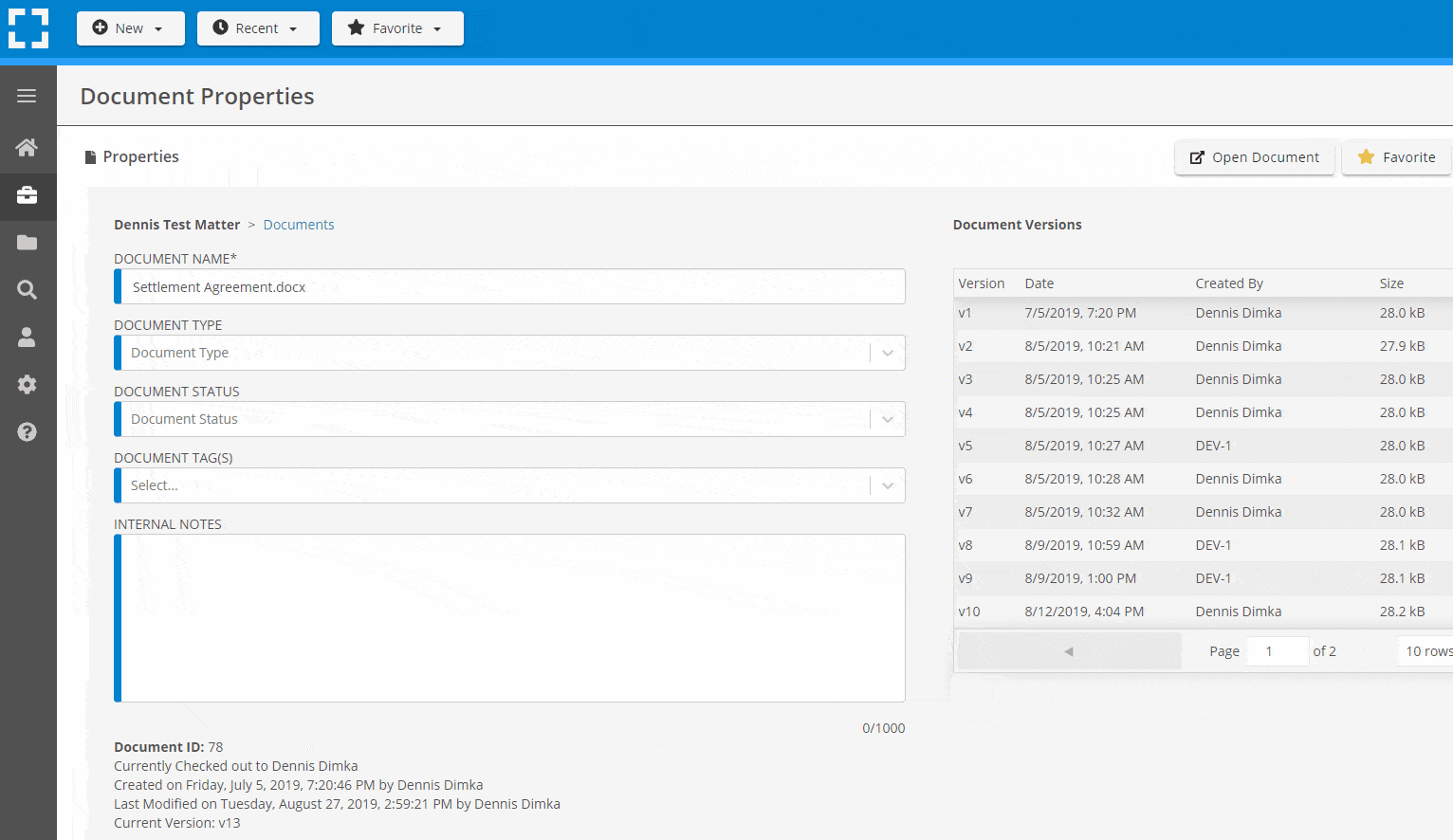
Search Everything
LexWorkplace is like Google for your law firm. Search across millions of pages, documents, folder email and notes in seconds. Refine your search by matter, document type, author and more.
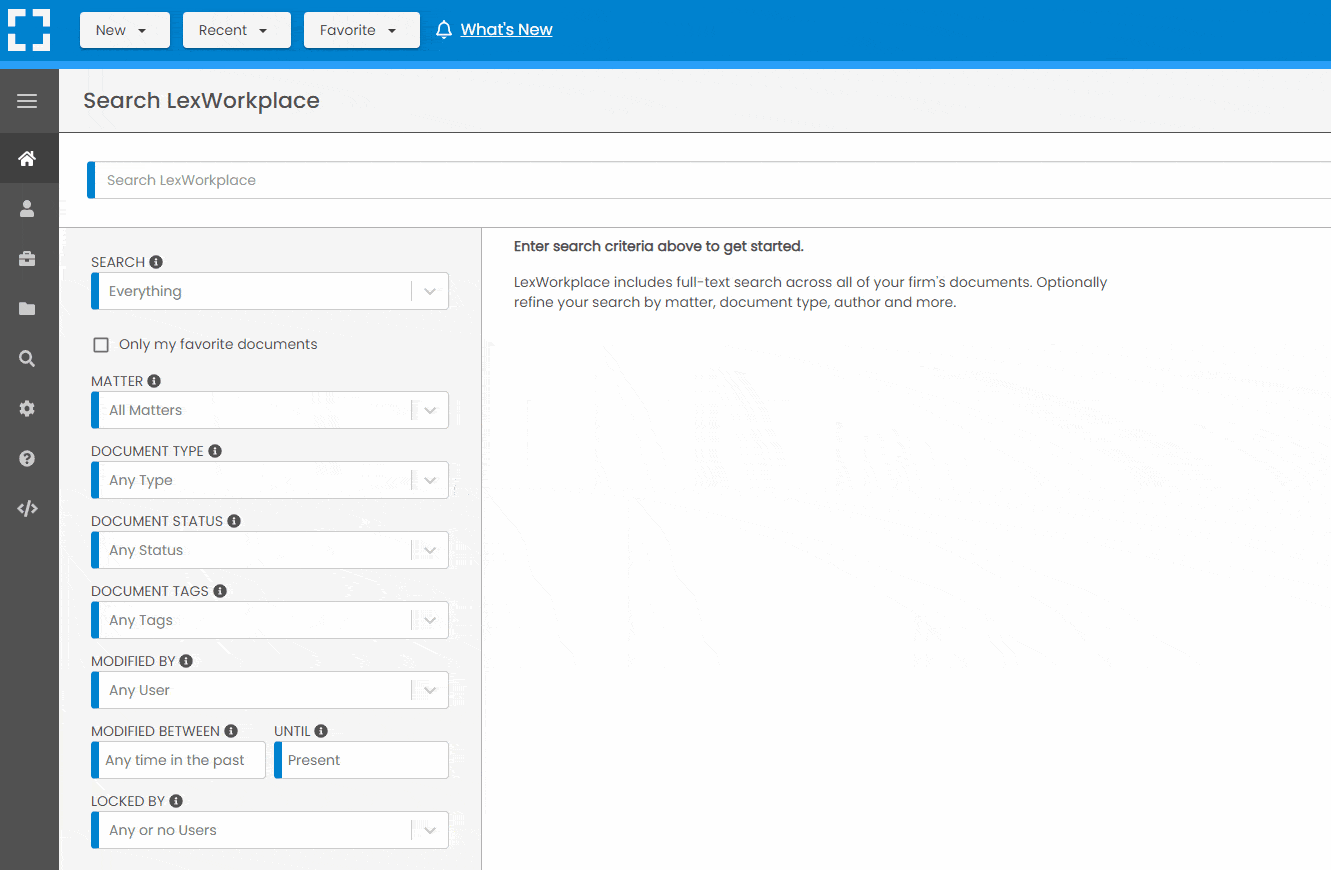
Search by…
- Client or Matter
- Document Type (Contract, Complaint, Order, etc.)
- Document Status (Draft, Final, etc.)
- Document Tags (Filed With Court, Fully Executed, etc.)
Outlook Integration + Comprehensive Email Management
Save emails to a matter without leaving Outlook. Saved emails are accessible to your entire team, organized and searchable.
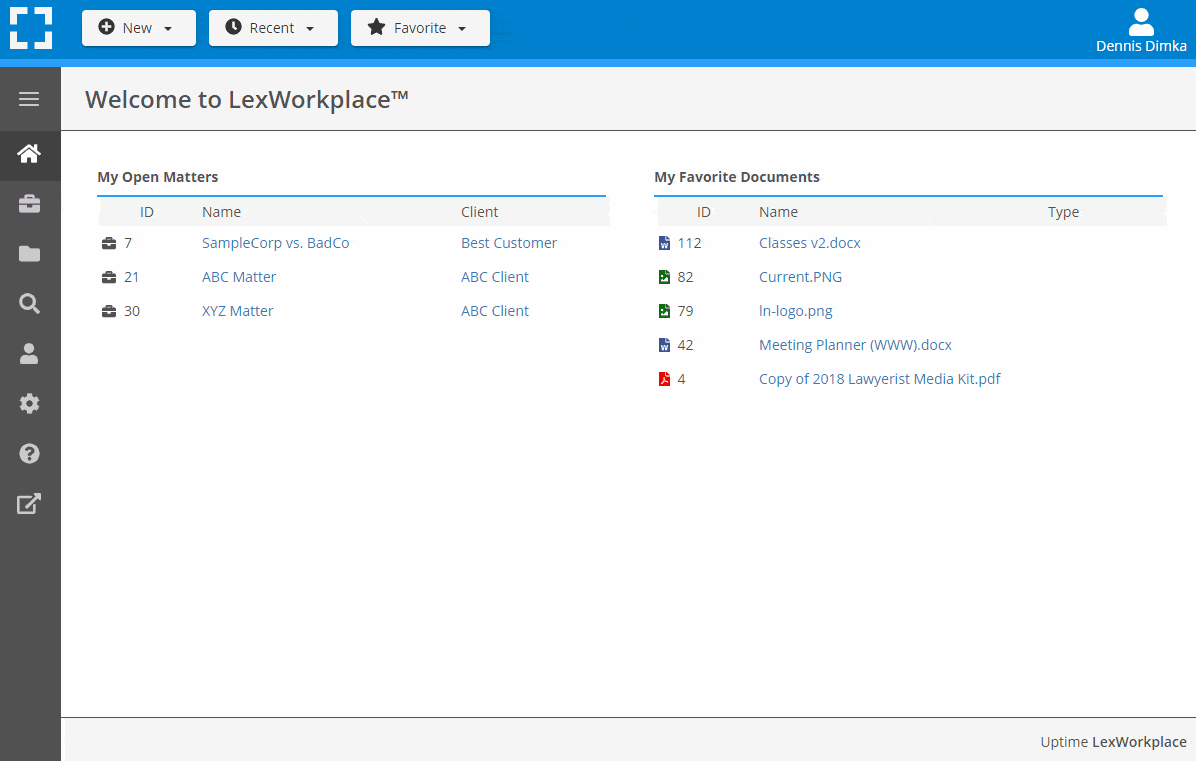
- Outlook Add-In that Works With Windows and Macs
- Save Entire, Original Email to a Matter in a LexWorkplace
- Email De-Duplication
- Organize Emails into Folders, Subfolders
Works with Windows and Macs
All of LexWorkplace is compatible with both Windows and Mac computers.
Next Steps
See What Clients Have to Say
Lawyers love LexWorkplace. See how the system streamlined one lawyer’s practice.
Watch the 5-Minute Demo
See LexWorkplace in action in our quick 5-minute overview and demonstration.
Or, if you want a one-on-one demo, or want to talk about LexWorkplace for your firm, schedule a call or demo below.
You Might Also Like
June 23, 2025
Role-Specific Benefits of Document Management Software for Law Firms
Legal document management software…
Want More Legal Technology Tips?
Subscribe to Uptime Legal to get the latest legal tech tips and trends, delivered to your inbox weekly.
